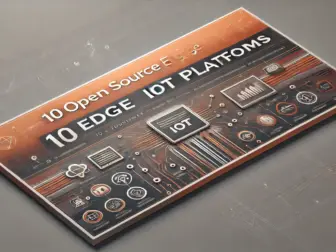Tag - Edge IoT
Blog, Edge Computing and Data Analytics, IoT Tools and Platforms , September 14, 2024 , AI at the edge, automation, Cloud Integration, Connectivity, Device management, digital transformation, Distributed Computing, Edge Computing, Edge IoT, Industry 4.0, IoT Platforms, Open Source, Smart Devices, Technology Innovation
Exploring the Impact of Edge IoT on Modern Technology
Edge IoT, also known as Edge Internet of Things, is a rapidly evolving technology that is shaping the future of the digital landscape. It refers to the concept of placing computing and data processing closer to the devices that generate data, rather than relying on distant cloud servers. This decentralized approach has the potential to revolutionize the way we interact with technology and utilize data in various industries.
One of the key benefits of Edge IoT is reduced latency. By processing data closer to its source, devices can make real-time decisions without having to wait for information to travel back and forth from a central server. This is particularly crucial in industries where split-second decision-making is critical, such as autonomous vehicles, industrial automation, and healthcare.
Furthermore, Edge IoT helps alleviate bandwidth constraints by reducing the amount of data that needs to be transmitted over networks. This not only speeds up data processing but also improves the overall efficiency of the system. By filtering out unnecessary data at the edge, organizations can optimize their network resources and reduce costs associated with data transmission.
In addition to improving speed and efficiency, Edge IoT also enhances the security and privacy of data. By processing sensitive information at the edge, organizations can minimize the risk of data breaches and unauthorized access. This is especially important in industries like healthcare and finance, where data privacy regulations are stringent.
Moreover, Edge IoT enables a more scalable and flexible infrastructure for IoT applications. By distributing computation resources across multiple edge devices, organizations can easily scale their systems to accommodate growing data volumes and user demands. This flexibility allows for more dynamic and agile deployment of IoT solutions, leading to increased productivity and innovation.
Despite the numerous benefits of Edge IoT, there are also challenges that need to be addressed. One of the main challenges is the complexity of managing a distributed network of edge devices. Organizations need to ensure that these devices are properly configured, updated, and secured to prevent vulnerabilities that could compromise the entire system.
Another challenge is interoperability, as different edge devices may use different protocols and standards for communication. Ensuring seamless integration and communication between these devices is crucial for the success of Edge IoT implementations.
Overall, Edge IoT is set to revolutionize the way we interact with technology and utilize data in various industries. By bringing computation and data processing closer to the source, organizations can benefit from improved speed, efficiency, security, and scalability. As this technology continues to evolve, it will play a pivotal role in shaping the future of the digital landscape.
